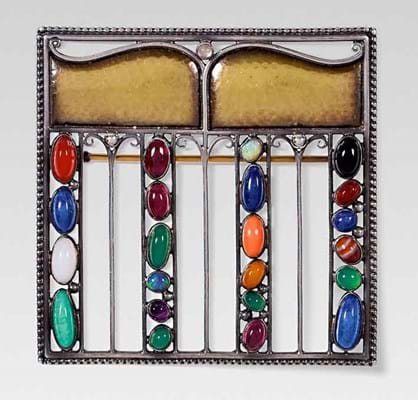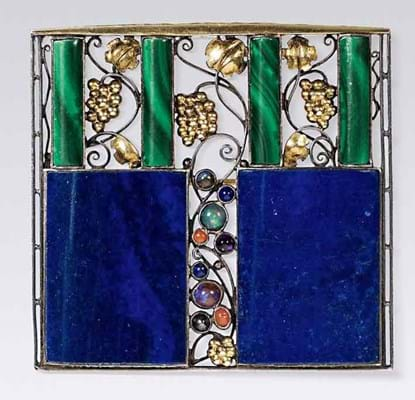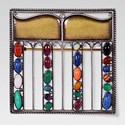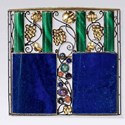Kinsky's jewels represent the quintessence of the geometric style that characterised the Austrian 'Secessionist' approach to design at the turn of the 20th century. Both were designed in 1908 and had been in possession of the same German family since then.
The first, measuring 2in x 2in (5cm x 5cm), was executed in 1909 by the renowned goldsmith Eugen Pflaumer, using silver, gold, lapis lazuli, malachite and semi-precious stones. Its form is similar to the façade of the Palais Stoclet, a large house in Brussels, designed by Hoffmann and considered to be his architectural masterpiece.
According to the workshop books of the Wiener Werkstätte only four pieces of this design were ever made. The cost then was considerable: 400 Kronen.
Kinsky had reckoned with €100,000-€200,000, but the successful buyer at the sale on June 17, a New York museum, was forced to €280,000 (£205,880), plus 26% buyer's premium, by the international competition. That was an auction record for a piece of Hoffmann jewellery - albeit a very short-lived one.
Vienna Exhibition Hall
The next lot, a brooch of similar size in silver, gold and semi-precious stones, was one of only two originally made. The other was later adapted into a silver brooch, by removing the gold parts but this piece remains in its original stat. It too has an architectural allusion, resembling an exhibition hall constructed in Vienna in 1908 to house works by the artistic avant-garde of the day.
Estimated like its counterpart, it was bid to €420,000 (£308,825) selling to a museum in Berlin.
In euros this is the highest price for any work by Hoffmann bettering the €410,000 (then £372,730) paid in the same rooms in May 2011 for gaming table designed by Hoffmann and Carl Otto Czeschka in 1906 for the industrialist Karl Wittgenstein (father of Ludwig Wittgenstein).
See this week's International Events for reports on sales of René Lalique's French Art Nouveau jewellery and Archibald Knox's Arts and Crafts silver.








